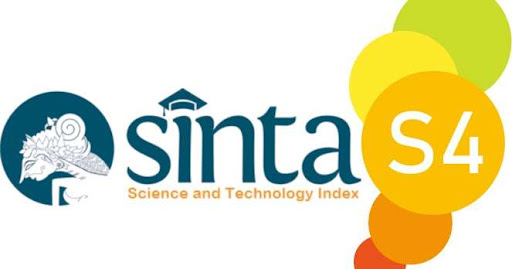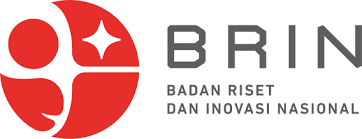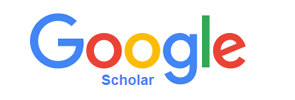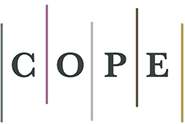Design of an IoT-Based Aquaculture Monitoring System Based on IoT in Fish Farming
DOI:
https://doi.org/10.51747/energy.v15i2.15203Keywords:
Internet of Things (IoT), Aquaculture, Water Quality, Real-Time Monitoring, Low-Cost SystemAbstract
Maintaining optimal water quality is essential for achieving high productivity in aquaculture. However, conventional monitoring practices among small-scale fish farmers remain manual and inefficient. This study presents the design and evaluation of a low-cost Internet of Things (IoT)-based water quality monitoring system tailored for rural aquaculture applications. The prototype integrates an ESP8266 microcontroller with pH, Total Dissolved Solids (TDS), and temperature sensors to enable real-time data collection and automated control. Field testing was conducted in a 2 × 3 × 1 m fish pond for seven days with data sampling every 5 minutes. The system achieved an average transmission latency of 4.2 seconds and 99 % data-delivery reliability. Measurement accuracy compared to manual instruments showed deviations of ±0.08 pH, ±0.4 °C, and ±15 ppm TDS. With a total hardware cost of approximately Rp 950,000 (≈ USD 60), the proposed system demonstrates a practical, reliable, and affordable solution for continuous water-quality monitoring, supporting sustainable fish farming in rural areas.
References
[1] W. Sung, I. Isa, & S. Hsiao, "Designing aquaculture monitoring system based on data fusion through deep reinforcement learning (drl)", Electronics, vol. 12, no. 9, p. 2032, 2023. https://doi.org/10.3390/electronics12092032
[2] W. Sung, I. Isa, & S. Hsiao, "An iot-based aquaculture monitoring system using firebase", Computers Materials & Continua, vol. 76, no. 2, p. 2179-2200, 2023. https://doi.org/10.32604/cmc.2023.041022
[3] M. Gleiser and S. Moro, "Implementation of an iot-based water quality monitoring system for aquaculture", International Journal of Research Publication and Reviews, vol. 4, no. 5, p. 1449-1452, 2023. https://doi.org/10.55248/gengpi.234.5.38043
[4] M. Lazo, L. Geronimo, L. Comilang, K. Cayme, J. Ventura, & E. Abana, "Aquacision: a multiparameter aquaculture water quality ester and decision support system", Indonesian Journal of Electrical Engineering and Computer Science, vol. 24, no. 1, p. 530, 2021. https://doi.org/10.11591/ijeecs.v24.i1.pp530-537
[5] M. Sulaiman, M. Rahman, & A. Adam, "Variance of total dissolved solids and electrical conductivity for water quality in sabak bernam", International Journal of Electrical and Computer Engineering (Ijece), vol. 13, no. 2, p. 2259, 2023. https://doi.org/10.11591/ijece.v13i2.pp2259-2269
[6] N. Stojanović and S. Chaudhary, "Real-time water quality monitoring in aquaculture using iot sensors and cloud-based analytics", RJCSE, vol. 4, no. 2, p. 174-187, 2023. https://doi.org/10.52710/rjcse.86
[7] Y. Xu, J. JIN, S. Zeng, Y. Zhang, & Q. XIAO, "Development and evaluation of an iot-based portable water quality monitoring system for aquaculture", Inmateh Agricultural Engineering, p. 359-368, 2023. https://doi.org/10.35633/inmateh-70-35
[8] H. Lu, C. Cheng, S. Cheng, Y. Cheng, W. Lo, W. Jianget al., "A low-cost ai buoy system for monitoring water quality at offshore aquaculture cages", Sensors, vol. 22, no. 11, p. 4078, 2022. https://doi.org/10.3390/s22114078
[9] M. Rasyid, S. Sukaridhoto, M. Dzulqornain, & A. Rifa’i, "Integration of iot and chatbot for aquaculture with natural language processing", Telkomnika (Telecommunication Computing Electronics and Control), vol. 18, no. 2, p. 640, 2020. https://doi.org/10.12928/telkomnika.v18i2.14788
[10] J. Pebralia, L. Handayani, D. Suprayogi, & I. Amri, "Implementation of internet of things (iot) based on google sheets for water quality monitoring system", Journal Online of Physics, vol. 9, no. 1, p. 85-89, 2023. https://doi.org/10.22437/jop.v9i1.28689
[11] S. Kanwal, F. Iqbal, A. Yousaf, and M. Rehman, “An optimal Internet of Things-driven intelligent decision-making system for real-time fishpond water quality monitoring and species survival,” Sensors, vol. 24, no. 23, Dec. 2024, doi: 10.3390/s24237842.
[12] F. M. Yusoff, W. A. D. Umi, N. M. Ramli, and R. Harun, “Water quality management in aquaculture,” Cambridge Prisms: Water, vol. 2, 2024, doi: 10.1017/wat.2024.6.
[13] Y. Singh and T. Walingo, “Smart water quality monitoring with IoT wireless sensor networks,” Sensors, vol. 24, no. 9, May 2024, doi: 10.3390/s24092871.
[14] O.-I. Lekang, Aquaculture Engineering, 3rd ed. Oxford, UK: Wiley-Blackwell, 2020.
[15] F. Akhter, H. R. Siddiquei, E. E. Alahi, and S. C. Mukhopadhyay, “Recent advancements of sensors for monitoring water quality parameters in smart fisheries farming,” Computers, vol. 10, no. 12, pp. 1–15, 2021, doi: 10.3390/computers10120123.
[16] N. M. Abdikadir, A. S. Abdullah, H. O. Abdullahi, and A. A. Hassan, “Smart aquaculture: IoT-enabled monitoring and management of water quality for Mahseer fish farming,” Int. J. Electr. Electron. Eng., vol. 11, no. 11, pp. 84–92, Nov. 2024, doi: 10.14445/23488379/IJEEE-V11I11P109.
[17] W. Nayeem, M. R. Islam, and M. M. Islam, “Internet of Things-based water quality monitoring system model for fish farming in Bangladesh,” J. Eng. Appl. Sci., 2025. Available: www.jeas.ruet.ac.bd
[18] M. A. H. Zamnuri, M. F. Mohd, N. A. Rahman, and R. Mohamad, “Integration of IoT in small-scale aquaponics to enhance efficiency and profitability: A systematic review,” Animals, vol. 14, no. 17, Sep. 2024, doi: 10.3390/ani14172555.
[19] N. Rosaline and S. Sathyalakshmi, “IoT-based aquaculture monitoring and control system,” in Proc. J. Phys.: Conf. Ser., vol. 1362, Institute of Physics Publishing, Nov. 2019, doi: 10.1088/1742-6596/1362/1/012071.
[20] G. E. Adjovu, H. Stephen, D. James, and S. Ahmad, “Measurement of total dissolved solids and total suspended solids in water systems: A review of the issues, conventional, and remote sensing techniques,” Remote Sens., vol. 15, no. 14, Jul. 2023, doi: 10.3390/rs15143534.
[21] Sugiarti, D. Rohaningsih, and S. Aisyah, “Study of total dissolved solids (TDS) and total suspended solids (TSS) in estuaries in Banten Bay, Indonesia,” in IOP Conf. Ser.: Earth Environ. Sci., vol. 1201, Institute of Physics, 2023, doi: 10.1088/1755-1315/1201/1/012045.
[22] M. J. Islam, A. Kunzmann, and M. J. Slater, “Responses of aquaculture fish to climate change-induced extreme temperatures: A review,” J. World Aquac. Soc., Apr. 2022, doi: 10.1111/jwas.12853.
[23] D. K. Verma, N. K. Maurya, P. Kumar, and R. Jayaswal, “Important water quality parameters in aquaculture: An overview,” Agriculture and Environment, Mar. 2022.
Downloads
Published
Issue
Section
License
Copyright (c) 2025 ENERGY: JURNAL ILMIAH ILMU-ILMU TEKNIK

This work is licensed under a Creative Commons Attribution-NonCommercial 4.0 International License.














